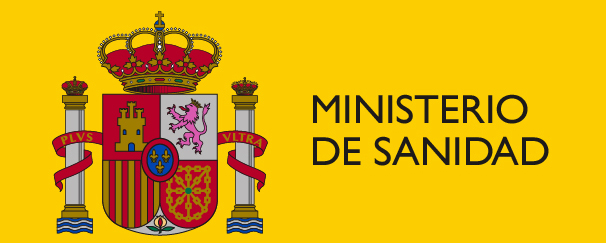Question
Recommendations
![]()
-
- All healthcare professionals caring for a patient who is a candidate for PPC must recognize that he or she has a central role in the decision-making process.
- Professionals should explain to children or adolescents and their families that their contribution to the decision-making for end-of-life care is significant, and that they do not have to decide alone, but that the multidisciplinary team will participate and support them at all times, taking responsibility according to their professional competence.
- Professionals should determine the patient’s capacity or maturity to make decisions, taking into account the complexity and importance of the decision and the patient’s personal and family circumstances, as well as the regulatory and legal framework.
- Ask patients how they would like to participate (level of involvement) in the therapeutic decision-making and with whom they would like to share the DM process. Repeat the consultation at each decision-making because patient preferences may vary depending on the timing of the disease and the scope of the decision.
- Systematically record the therapeutic decisions agreed with the patient and family in the PPC patient’s medical record.
- To facilitate the patient’s participation in decision-making, it is suggested that the practitioner consider the following:
- Generate as much closeness and trust as possible.
- Address the patient directly, to make it clear that he or she is at the center of the conversation.
- Give clear and honest information, using language that is easy to understand and adapted to the patient’s level of maturity. Value the use of visual and technological aids.
- Ensure that the patient understands and comprehends the information received by maintaining an active listening attitude. Verbal explanations may be accompanied by additional written information.
- Encourage an open and honest dialogue, especially if the decision is complex or there is uncertainty about the prognosis.
- Support parents to facilitate the patient’s participation in decision-making:
- Help them to identify their fears and suffering and to distinguish them from those of their sons and daughters.
- Advise them to actively and frequently seek out their children’s feelings and opinions.
- Suggest that the patient can be present during discussions with the healthcare team.
- Training of professionals in shared decision-making with patients is recommended.
- It is suggested that, in the absence of medical contra-indications, the desire for organ and tissue donation be explored as part of the end-of-life decision-making process.
Rationale
In addition to attitudes, conducts, behaviours, and feelings about end-of-life decision-making and patient involvement in the process, the CDG has considered the fundamental practical aspect of the need to assess the patient’s capacity to decide.
Complete clinical question
Full information on this question (available in Spanish), see:
http://portal.guiasalud.es/guia-en-capas/cuidados-paliativos-pediatria/#question-3References
8. Ley 41/2002, de 14 de noviembre, básica reguladora de la autonomía del paciente y de derechos y obligaciones en materia de información y documentación clínica. Boletín Oficial del Estado, nº 274, (15-11-2002).
49. Junta de Andalucía [Internet]. [citado mayo 2022]. Los derechos de los niños y niñas. Disponible en: https://www.juntadeandalucia.es/organismos/igualdadpoliticassocialesyconciliacion/areas/infancia-familias/derechos-infancia.html
50. Ley 26/2015, de 28 de julio, de modificación del sistema de protección a la infancia y a la adolescencia. Boletín Oficial del Estado nº 180 (29 de julio de 2015).
51. Coyne I, O’Mathúna DP, Gibson F, Shields L, Leclercq E, Sheaf G. Interventions for promoting participation in shared decision-making for children with cancer. Cochrane Database Syst Rev. 2016;11(11):Cd008970. https://doi.org/10.1002/14651858.CD008970.pub3
52. Federación Española de Padres Niños con cáncer. Cambio legislativo respecto al interés superior del menor: Opiniones de adolescentes y padres/tutores de niños con cáncer. 2017.
53. Escudero Carretero MJ, Simón Lorda P, Aguayo Maldonado J, Arcos Ocón L, Cía Ramos R, Fernández López A, et al. El final de la vida en la infancia y la adolescencia: Aspectos éticos y jurídicos en la atención sanitaria. Sevilla: Junta de Andalucía; 2011.
54. Hinds PS, Drew D, Oakes LL, Fouladi M, Spunt SL, Church C, et al. End-of-life care preferences of pediatric patients with cancer. J Clin Oncol. 2005;23(36):9146-54. https://doi.org/10.1200/jco.2005.10.538.
55. Inglin S, Hornung R, Bergstraesser E. Palliative care for children and adolescents in Switzerland: a needs analysis across three diagnostic groups. Eur J Pediatr. 2011;170(8):1031-8. https://doi.org/10.1007/s00431-011-1398-5.
56. Kars MC, Grypdonck MH, de Korte-Verhoef MC, Kamps WA, Meijer-van den Bergh EM, Verkerk MA, et al. Parental experience at the end-of-life in children with cancer: ‘preservation’ and ‘letting go’ in relation to loss. Support Care Cancer. 2011;19(1):27-35. https://doi.org/10.1007/s00520-009-0785-1.
57. Matsuoka M, Narama M. Parents’ thoughts and perceptions on hearing that their child has incurable cancer. J Palliat Med. 2012;15(3):340-6. https://doi.org/10.1089/jpm.2011.0410.
58. de Vries MC, Bresters D, Kaspers GJL, Houtlosser M, Wit JM, Engberts DP, et al. What Constitutes the Best Interest of a Child? Views of Parents, Children, and Physicians in a Pediatric Oncology Setting. AJOB Primary Research. 2013;4(2):1-10. https://doi.org/10.1080/21507716.2012.757254.
59. Weaver MS, Baker JN, Gattuso JS, Gibson DV, Sykes AD, Hinds PS. Adolescents’ preferences for treatment decisional involvement during their cancer. Cancer. 2015;121(24):4416-24. https://doi.org/10.1002/cncr.29663.
60. Kars MC, Grypdonck MH, de Bock LC, van Delden JJ. The parents’ ability to attend to the «voice of their child» with incurable cancer during the palliative phase. Health Psychol. 2015;34(4):446-52. https://doi.org/10.1037/hea0000166.
61. Ley 10/2011, de 24 de marzo, de derechos y garantías de la dignidad de la persona en el proceso de morir y de la muerte. Boletín Oficial de Aragón nº 70, (24 de marzo de 2011).
62. Ley 26/2018, de 21 de diciembre, de derechos y garantías de la infancia y la adolescencia de la Comunidad Valenciana. DOGV nº 8450, (24 de diciembre de 2018).
63. Espejo M, Miquel E, Esquerda M, Pifarré J. Valoración de la competencia del menor en relación con la toma de decisiones sanitarias: escala de la competencia de Lleida. Med Clin (Barc). 2011;136(1):26-30. https://doi.org/10.1016/j.medcli.2009.05.014.
64. Drane JF. The many faces of competency. Hasting Cent Rep. 1985;4:17-21.






